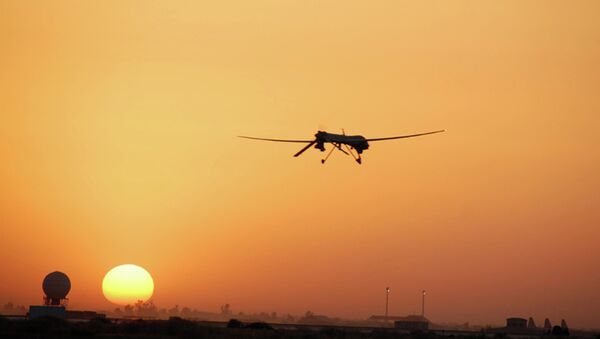There are a number of reasons for placing control of the US lethal drone program under the Department of Defense. For one, the Central Intelligence Agency is exactly that – an intelligence agency, never intended as a military arm in the War on Terror. Granting the Pentagon authority over drone strikes could legitimize a practice which has faced heavy criticism for its secretive nature and civilian deaths.
During a 2013 speech before the National Defense University, President Obama indicated that he would begin that transfer process, placing control of a vast military operation where it belongs: with the military.
Nearly two years later, little progress has been made, though the White House is continuing its efforts.
“The President has explained his belief that we must be more transparent about both the basis of our counterterrorism actions and the manner in which they are carried out, whether they are drone strikes or training partners,” National Security Council spokesman Ned Price told the Huffington Post last week. “Because of this, he has indicated that he will increasingly turn to our military to take the lead and provide information to the public about our efforts. We continue to work diligently toward this goal.”
So what’s the problem? What’s holding back these efforts for a more transparent drone program?
One issue is the fact that the CIA’s covert nature is exactly what makes the drone program so effective. Transferring power to the Pentagon would mean that UAV strikes would have to follow the same international laws which the Defense Department abides by. The CIA’s very essence allows it to launch clandestine strikes in countries the United States has no official authority to attack.
This was the case in Yemen. While former Yemeni President Abd-Rabbu Mansour Hadi allowed the US to conduct strikes within his borders, that support shifted when a 2013 missile killed a wedding party of twelve. Officially, the US was grounded, but unofficially, the CIA carried on.
US lawmakers may also be to blame. In 2014, a Congressional budget plan secretly cut funding to the White House’s transfer plan, limiting the president’s options in following through with his proposal.
As with many things in the legislature, Congressional infighting runs deep. Last year, Senator Diane Feinstein said she had seen the CIA “exercise patience and discretion specifically to prevent collateral damage” and that she “would really have to be convinced that the military would carry it out that well,” according to the Washington Post.
Senator John McCain, meanwhile, has been a vocal proponent of the transition.
“A major policy decision that has to do with the ability to defend this nation against the forces of violent Islamic extremism is now being decided in a secret annex of a mammoth appropriations bill,” McCain said on the Senate floor following the budget vote.
Lastly is the simple question of whether the drone program will be more successful in the hands of the Pentagon, and which organization would more ably handle oversight.
While Pentagon control would offer more transparency, some lawmakers argue that the CIA runs a tighter ship. The intelligence agency takes special care to keep civilians out of harm’s way, while some insist the Defense Department is less concerned with collateral damage. It was a Pentagon strike, after all, which hit the Yemeni wedding convoy.
There is also the fact that each department operates very differently. While CIA personnel tend to stay with the agency longer, thus honing their methods, DOD staffers tend to move on to other government positions after only a few years. That long-term expertise may mean the CIA would be more effective, after all.
While the White House insists that transferring the drone program too quickly could weaken counterterrorism efforts, some have even accused the administration of not being sincere in its pledge.
“They’re backing away from it,” Senator McCain told the Huffington Post. “It’s very clear that they are not pursuing what they said was their objective.”
No matter who is in control, one thing seems certain: the drone program is showing no signs of slowing down. Human rights group Reprieve conducted an analysis last November. In targeting only 41 men, the United States killed 1,147 people.
And that’s only based on information which was publicly available.






